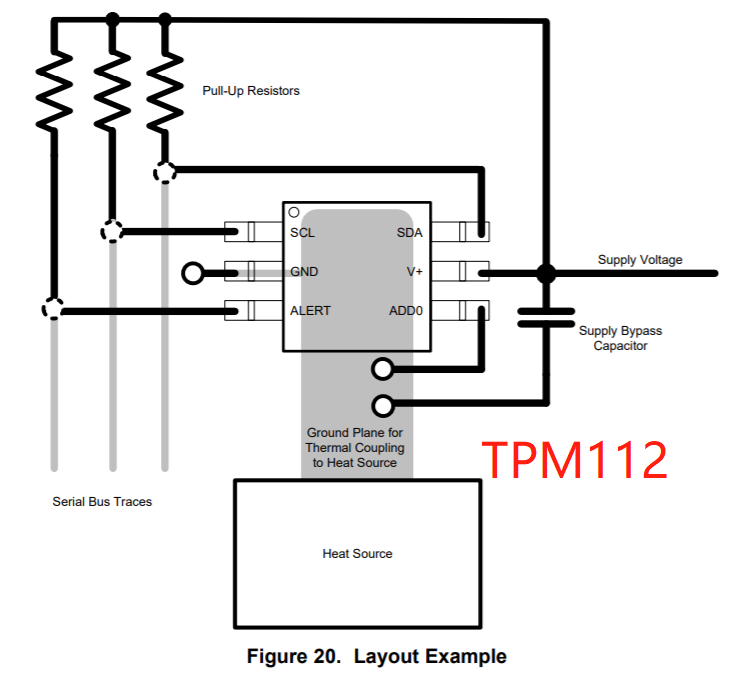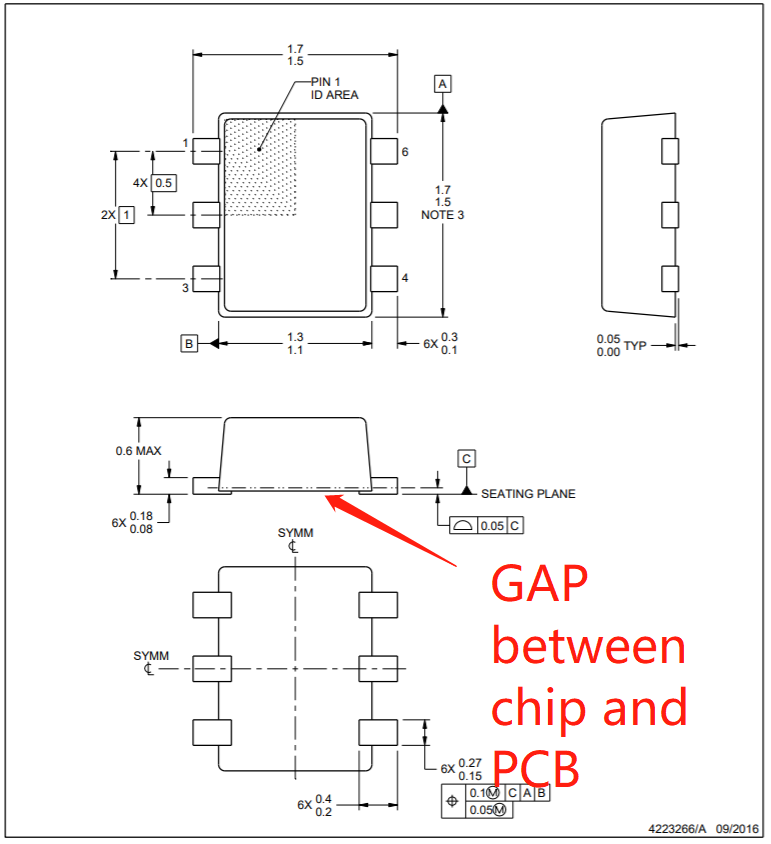Other Parts Discussed in Thread: TMP117, HDC1080, HDC2080
From this picture, it seems that the temperature sensing area of TPM112 is at the bottom of the chip. But from the chip structure, there will be a gap between the bottom of the chip and the PCB. How can the temperature sensing area contact the hot body better? Thank you very much.



